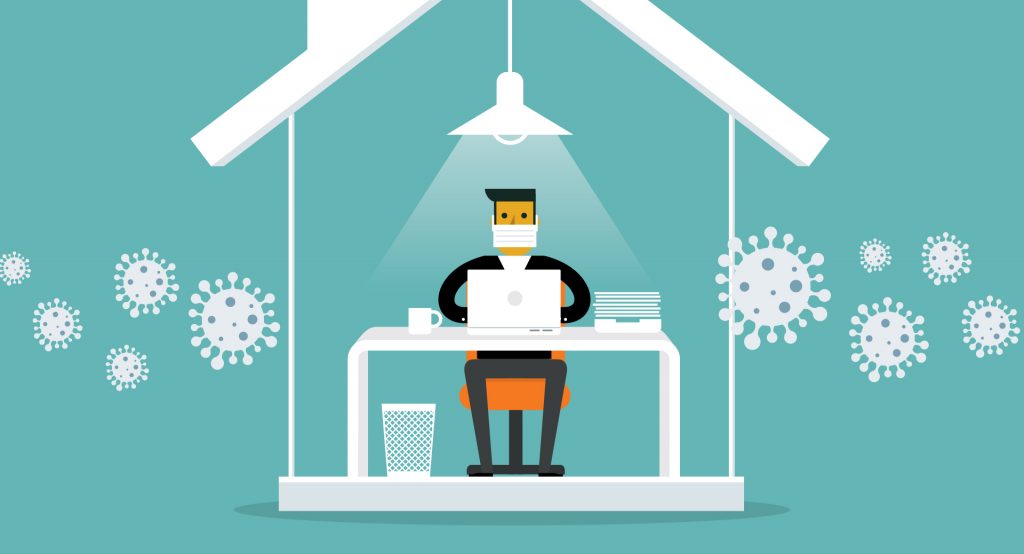
Brief Virus Background
On March 11, 2020 the WHO declared the rapid transmission of the coronavirus disease, COVID-19, a pandemic. After initial serious outbreaks on the east (New York City) and the west (Seattle) coasts, the virus has since spread throughout the United States (US). Currently the country leads the world in infections diagnosed, 2,504,175, and deaths, 125,484 with daily infections now exceeding 40,000 cases.
Scientists at John Hopkins states that 70% of the population would need to be immune to achieve herd immunity.2 There is no vaccine available nor is one anticipated until no earlier than 2021. Beyond availability there are the issues of vaccine effectiveness, an optimistic target for which would be 75%.1 However, the proportion of the population willing to accept the vaccine currently polled at no more than 66%.1
Symptoms associated with COVID-19 are largely similar to seasonal influenza however the incubation period is substantially greater, as much as 12 days for the SARS-CoV2 virus. A small proportion of those infected will experience a severe disease resulting in lengthy hospitalization and death. Additionally, 20-40% of those infected may experience very mild or no symptoms at all but are still capable of passing on the infection. Recent research suggests that those cases that experience mild or no symptoms also do not develop significant antibodies to the virus (Ref). This means that they may not be able to develop a sufficient immune defense to avoid a subsequent infection. Factoring in the issues of vaccine availability and acceptance mean that herd immunity will be difficult to achieve any time soon.
While the virus is easily inactivated by washing with soap and water, the principal means to slow the rate of transmission in the community involve social distancing. Both quarantine and isolation are used to minimize infectious disease outbreak impacts. Quarantine is designed to restrict movement or separate well persons who have been exposed to the virus from the general population, before they know whether they will become ill.3,4,5 Isolation is similar to quarantine in action, but in this case the disease status is known; it is intended to separate and restrict the movement of ill persons who have a contagious disease in efforts to prevent its transmission to others.3,4,5
The challenge ahead; how will schools handle isolation and quarantine?
Student risk of transmission have been previously described (see four Student Risk documents). While colleges and universities are currently adjusting their curricula so that they can be delivered remotely; there are aspects of student life that will pose considerable challenges. Briefly these include living arrangements, working on or off campus, internships, sports and social activities among many other. Additionally, institutions must develop the means, in collaboration with local public health organizations, to contact all returning students regarding quarantine/isolation protocols, testing for active or past infections, and sending/receiving critical information updates through the course of the pandemic. Most imperatively educational institutions must quickly identify those returning students that must quarantine and/or self-isolate in order to arrest the circulation of the corona virus and give them guidance for how to do so effectively.
A fear is that cities with notable college student populations may overburden Public Health departments and reduce the efficiency of contact tracing efforts. Additionally, isolation and quarantining of cases and contacts may become more difficult in the university setting. In anticipation of an overburdened Public Health system, college towns may experience an increase in infections due to many reasons, one including the infrastructural needs of Public Health and college campuses. Schools should consider innovative ways and adaptations before bringing students back to campus. and Public Health departments should also consider the challenges this population may face causewith increased need for case and contact monitoring during isolation and quarantine orders.
Finally, with anticipated arrival of seasonal influenza in the fall, epidemiologists and health experts are concerned the US will experience the fallout of two serious diseases circulating at the same time, potentially complicating diagnoses and presenting a double burden on the health care system. (ref) However, as outlined in (background article) transmission is currently impacted by human behaviors and policy. With behaviors such as increased social distancing, hand washing and mask utilization, we could see less health impacts from the flu. Currently, CDC tracks both influenza and SARS-CoV-2 and provides a weekly surveillance report.
References
https://www.cdc.gov/coronavirus/2019-ncov/if-you-are-sick/quarantine-isolation.html
1. Correspondent, E. C., CNN Senior Medical. Fauci says Covid-19 vaccine may not get US to herd immunity if too many people refuse to get it. CNN https://www.cnn.com/2020/06/28/health/fauci-coronavirus-vaccine-contact-tracing-aspen/index.html.
2. April 30, H. staff report / P. COVID-19 and the long road to herd immunity. The Hub https://hub.jhu.edu/2020/04/30/herd-immunity-covid-19-coronavirus/ (2020).
3. Cetron, M., Maloney, S., Koppaka, R. & Simone, P. ISOLATION AND QUARANTINE: CONTAINMENT STRATEGIES FOR SARS 2003. Learning from SARS: Preparing for the Next Disease Outbreak: Workshop Summary (National Academies Press (US), 2004).
4. Wilder-Smith, A. & Freedman, D. O. Isolation, quarantine, social distancing and community containment: pivotal role for old-style public health measures in the novel coronavirus (2019-nCoV) outbreak. J Travel Med 27, (2020).
5. Giubilini, A., Douglas, T., Maslen, H. & Savulescu, J. Quarantine, isolation and the duty of easy rescue in public health. Dev World Bioeth 18, 182–189 (2018).